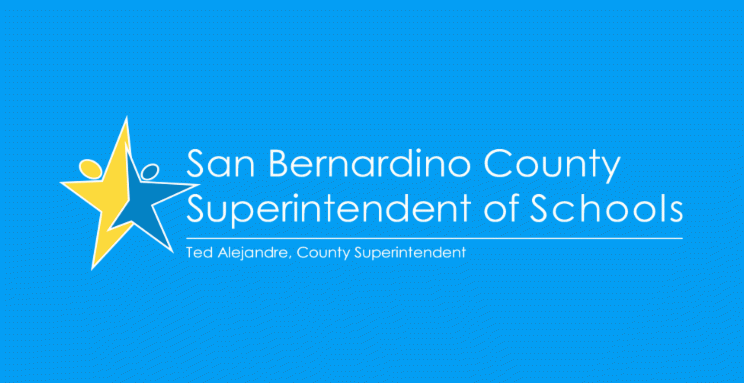California School Dashboard Provides Statewide Accountability Updates

San Bernardino, CA – With complete performance results on College/Career and Chronic Absenteeism indicators, the California Department of Education is releasing today a newly designed and updated California School Dashboard as part of a comprehensive accountability system for the state’s public schools. By presenting multiple measurements in several key areas, the Dashboard provides a clearer understanding of how local schools and districts are progressing.
“Our schools and districts have been diligent in compiling the measurements that range from the statewide testing in both English language arts and math to cohort grad rates. This should help the public, especially parents and community stakeholders, understand how their schools and districts are performing,” San Bernardino County Superintendent Ted Alejandre said.
While the California School Dashboard has had two previous releases of data, today’s version is the first that includes performance markers in all six of the statewide measurements, along with local indicators. Key advantages of the new system are that it defines school progress by more than a single test score, it addresses equity with a focus on disparities between student subgroups, and it provides more local information that pertains to goals, priorities and planning supported by district Local Control Accountability Plans (LCAP).
The six statewide performance indicators reported in today’s Dashboard include: College and Career Readiness; Chronic Absenteeism; Suspension Rates; English Learner Progress; Grad Rates; and Academic, which includes state testing results in English language arts and mathematics.
For each of the indicators, districts receive schoolwide and student subgroup color-coded performance levels. The colors range from blue (highest) to green, yellow, orange and red (lowest).
The Dashboard provides measurements in the six statewide performance indicators. For example, in the Suspension Rate indicator, three county districts – Baker Valley Unified, Etiwanda and Mt. Baldy – scored with “blue” or the highest-level designation with suspension rates of less than 0.5 percent.
In addition to the six statewide measurements, four local indicators based on information collected by districts, county offices and charter schools include: Basic Services and School Conditions; Implementing State Academic Standards; Parent Engagement; and School Climate. Also, county offices of education provide local indicators on coordination of services for expelled students and foster youth.
A key element of California’s comprehensive accountability and continuous improvement system for K-12 schools is that the Dashboard helps identify schools and districts facing challenges in specific indicators. This is the second year the Dashboard data informs the Statewide System of Support, which provides for county offices of education to assist districts and schools with determining strengths and weaknesses, and areas where intensive support called Differentiated Assistance is needed.
County offices of education, along with the California Collaborative for Educational Excellence, provide Differentiated Assistance for local educational agencies when student group performance in two or more indicators record the lowest measurement, identified by the color red.
Among schools who were in Differentiated Assistance from San Bernardino County during the 2017-18 academic year, eight of those districts exited the program for the 2018-19 year. Those districts are Adelanto, Alta Loma, Bear Valley Unified, Cucamonga, Helendale, Lucerne Valley Unified, Needles Unified and Rialto Unified. Seven other county districts – Central, Etiwanda, Mt. Baldy, Ontario-Montclair, Silver Valley Unified, Trona Unified and Upland Unified – remain out of Differentiated Assistance. Eight other county districts remain in Differentiated Assistance for 2018-19, while 10 more will be entering for 2018-19.
Two years ago, San Bernardino County Superintendent of Schools launched a countywide Open Data Portal that optimizes a range of data sets, many of which focus on college and career readiness. The Open Data Platform also includes Dashboard data for county districts, which can be viewed at http://ed-data.sbcss.k12.ca.us.
The public can view data for school districts statewide on the California School Dashboard at the following link on the California Department of Education’s webpage at https://www.caschooldashboard.org/#/Home
The San Bernardino County Superintendent of Schools serves as an intermediate service agency between the California Department of Education and the 33 K-12 school districts in the county. The office works in collaboration with school districts, other agencies, families and the community at-large to ensure success for the 403,000 K-12 students in San Bernardino County.





















